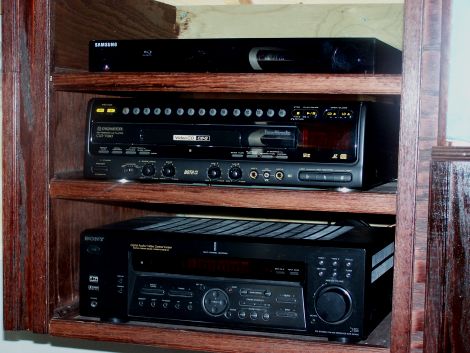 In the late 1970s an incredible new video technology debuted. Originally called Discovision, it delivered high resolution movies on an optical platter roughly the size of an LP. Although it was an analog medium, movies frequently included a digital audio track (typically 3 channel DTS) along-side the stereo analog track.
In the late 1970s an incredible new video technology debuted. Originally called Discovision, it delivered high resolution movies on an optical platter roughly the size of an LP. Although it was an analog medium, movies frequently included a digital audio track (typically 3 channel DTS) along-side the stereo analog track.
LaserDisc was significantly more expensive — and delicate — than VHS and BetaMax, with which it competed, but until the DVD format came out commercially in 1996 (in Japan, ’97 in the US and Canada) it was unrivaled for video quality. Although it mostly disappeared by the 90s, it still had a niche with serious videophiles — and karaokee bars.

Pictured here is a 2009 model Blu-ray player, the great-grandchild of the LaserDisc, sitting atop a late-model LaserDisc player. They’re connected by a late 90s DTS stereo receiver and a mid 2000s LCD HDTV, controlled by a Harmony Universal Remote control. 3 decades of cutting edge home theater technology working together beautifully.
A geeky tear might have welled up in my eye when it all started talking to each other.
